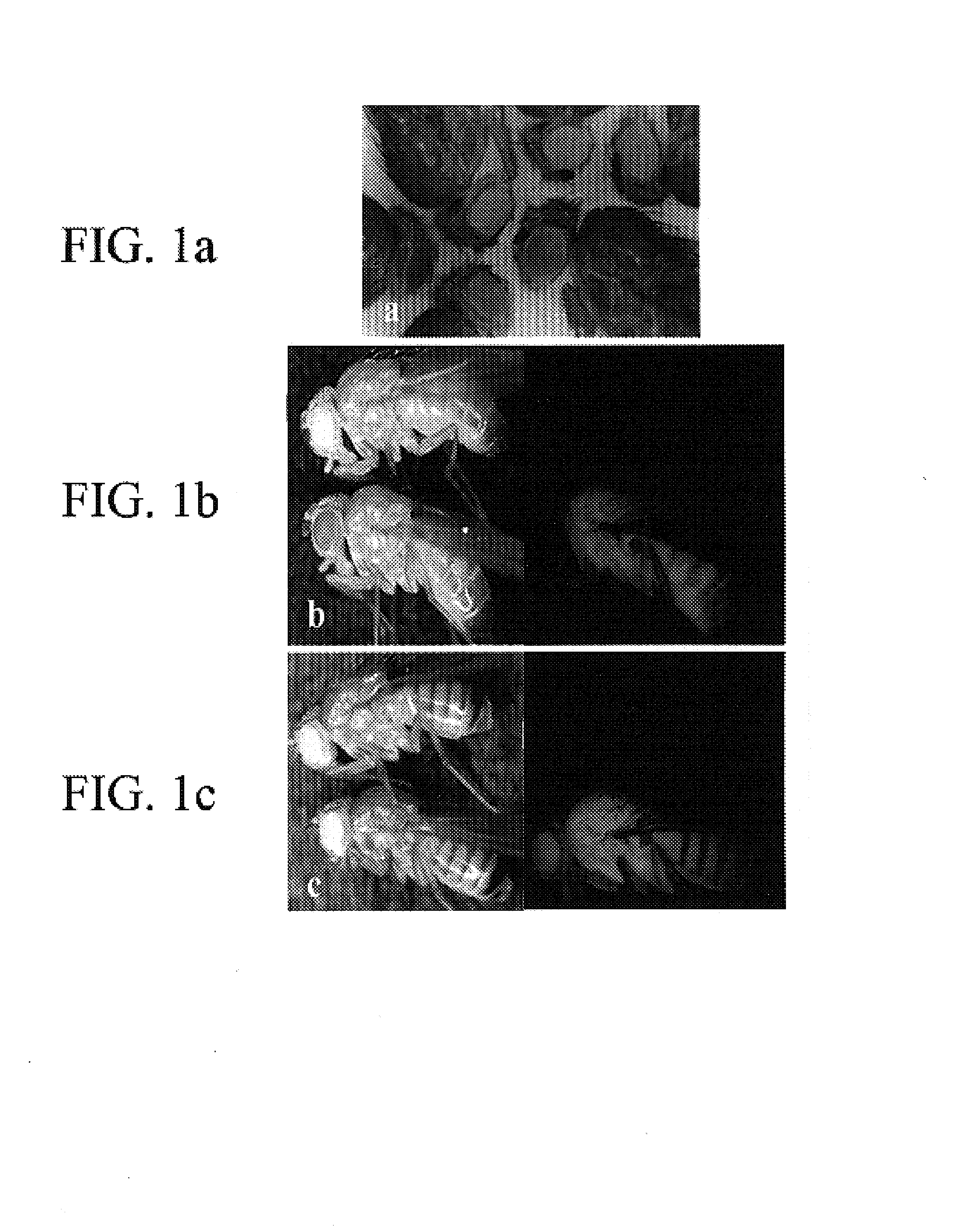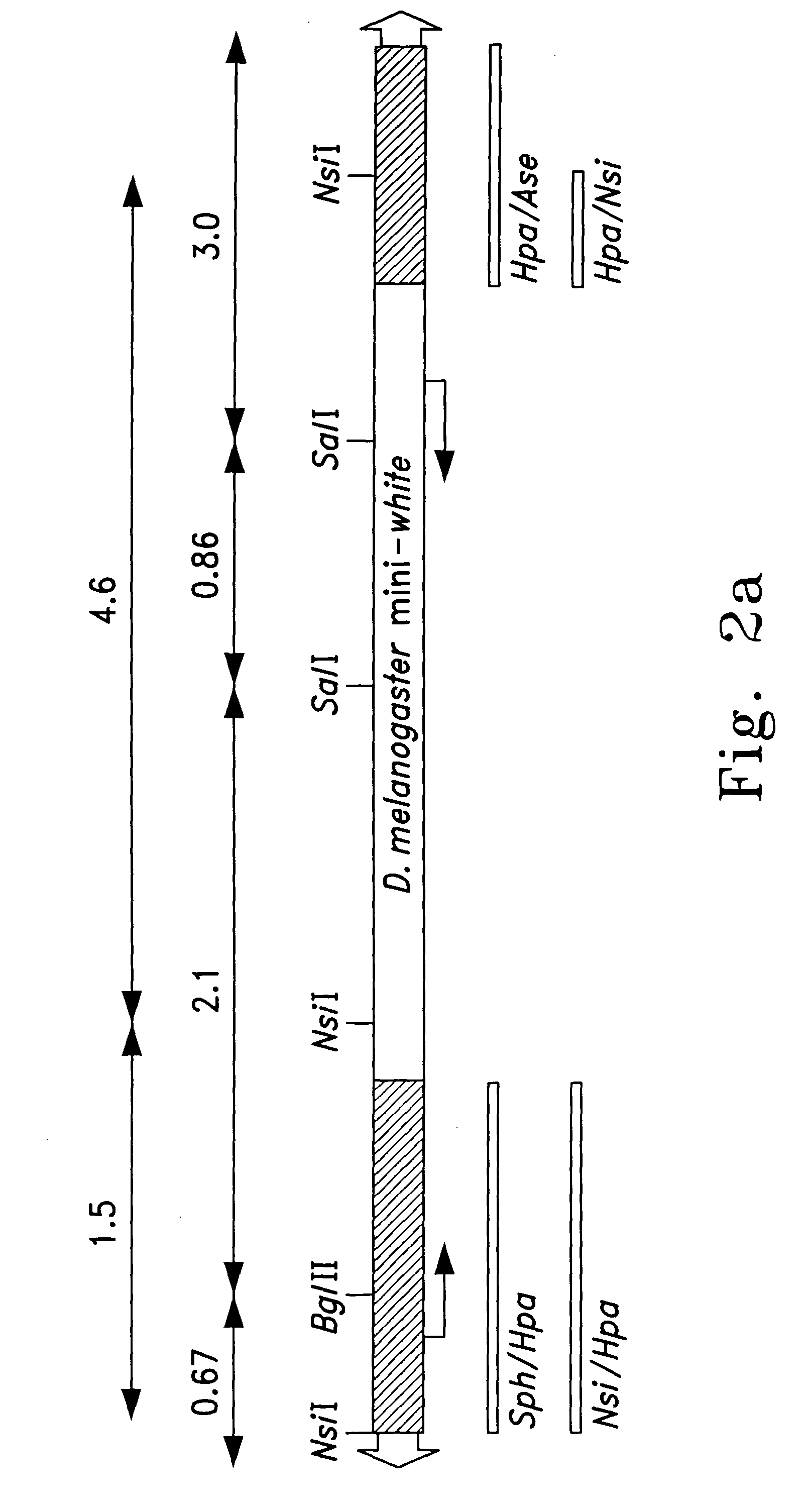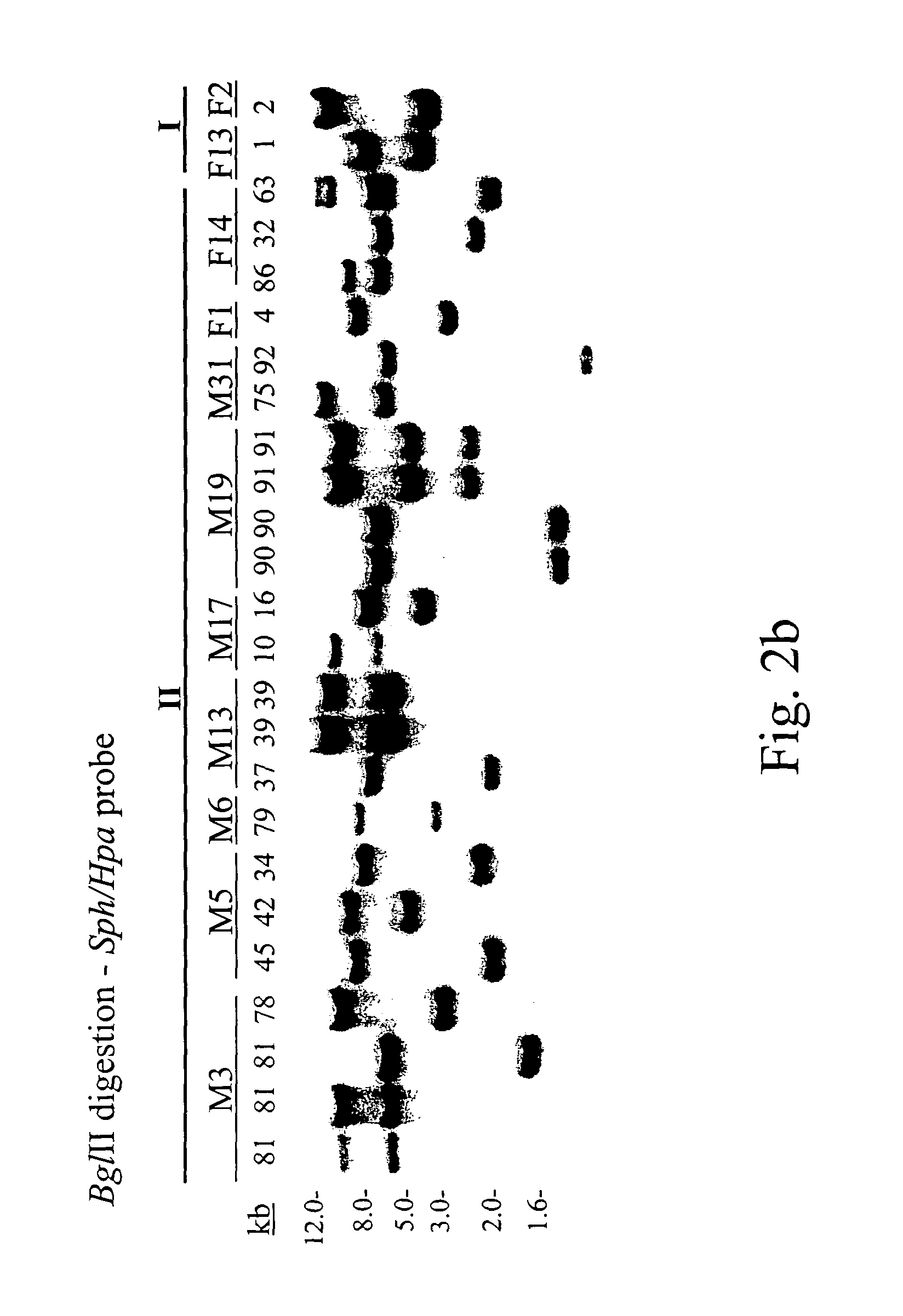PiggyBac transformation system
a transformation system and piggybac technology, applied in the field of piggybac transformation system, can solve the problems of limited widespread use of piggybac and not unexpectedly limited phylogenetic limitations on the function of transposons
- Summary
- Abstract
- Description
- Claims
- Application Information
AI Technical Summary
Benefits of technology
Problems solved by technology
Method used
Image
Examples
example 1
[0051]The piggyBac transposase helper plasmid, pBΔSac, having its 5′ terminus deleted was described previously (Handler et al., 1998; supra, herein incorporated by reference). pBΔSac was created by digestion of p3E1.2 (U.S. patent application Ser. No. 08 / 844,274) with SacI and religation, that deletes the 5′ piggyBac terminal sequences but maintains the putative piggyBac promoter region. A transposase helper under heat-shock promoter regulation was created by isolation of the 457 bp XbaI-XmnI 5′ nontranslated sequence from the hsp70 gene (Lis et al., 1983, supra; herein incorporated by reference). The XbaI-XmnI fragment was blunted and ligated into the SacI-blunted site of pBΔSac to create phsp-pBac. This places the hsp70 promoter sequence upstream of the putative piggyBac promoter.
[0052]The pB[Dmw] vector was created by insertion of a Drosophila melanogaster mini-white gene (Pirrotta et al., EMBO J., Volume 4, 3501–3508, 1985; herein incorporated by reference) into the 3E1 piggyBac...
example 2
[0053]Embryo injections used standard procedures (Rubin & Spradling, Science, Volume 218, 348–353, 1982; herein incorporated by reference) with dechorionation achieved either manually or by 1.6% hypochlorite solution followed by about 2 washings in approximately 0.02% Triton-X 100 in water. Eggs were placed on double-stick tape, desiccated in room-air for about 10–15 minutes and submerged under Halocarbon 700 oil. Injections followed standard Drosophila microinjection procedures (Rubin and Spradling, Science, Volume 218, 348–353, 1982; herein incorporated by reference). DNA mixtures had vector:helper concentrations of about 600:400 μg / ml, respectively, in injection buffer (approximately 5 mM KCl; approximately 0.1 mM sodium phosphate; at about pH 6.8). Injected eggs were placed in an oxygenated and humidified tissue culture chamber at about 22–23° C. for about 3–6 hours, and phsp-pBac injected eggs were heat shocked at about 37° C. for about one hour. Hatched larvae were collected a...
example 3
[0059]Southern hybridization was performed to verify genomic transposition of the piggyBac vectors. Approximately 5–10 μg of genomic DNA was digested with indicated restriction enzymes and separated on about 0.8% agarose gels. DNA was stained with ethidium bromide, blotted to nylon filters and immobilized by ultraviolet irradiation. Hybridization probes were labeled with [32P]-dCTP by random priming (Gibco BRL) according to the manufacturer's specifications. Probe DNA was generated from indicated piggyBac restriction fragments (see below) that were separated from p3E1.2, or the entire egfp gene from pEGFP-1 (Clontech) by agarose electrophoresis and gel-elution. Hybridizations were performed in phosphate buffer, approximately pH 7.5; about 1% BSA; about 7% SDS at about 65° C. with an initial wash in about 2×SSC; about 0.2% SDS at about room temperature and about two washes in about 1×SSC; about 0.1% SDS at about 55° C. for approximately 30 minutes. Autoradiography was performed by ex...
PUM
| Property | Measurement | Unit |
|---|---|---|
| Frequency | aaaaa | aaaaa |
| Fluorescence | aaaaa | aaaaa |
Abstract
Description
Claims
Application Information
 Login to View More
Login to View More - R&D
- Intellectual Property
- Life Sciences
- Materials
- Tech Scout
- Unparalleled Data Quality
- Higher Quality Content
- 60% Fewer Hallucinations
Browse by: Latest US Patents, China's latest patents, Technical Efficacy Thesaurus, Application Domain, Technology Topic, Popular Technical Reports.
© 2025 PatSnap. All rights reserved.Legal|Privacy policy|Modern Slavery Act Transparency Statement|Sitemap|About US| Contact US: help@patsnap.com



